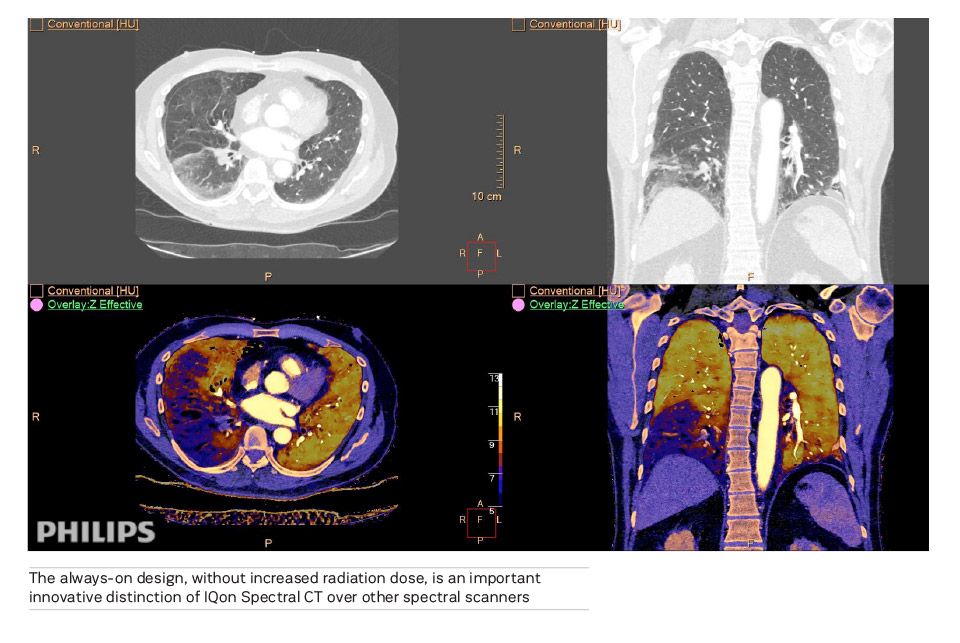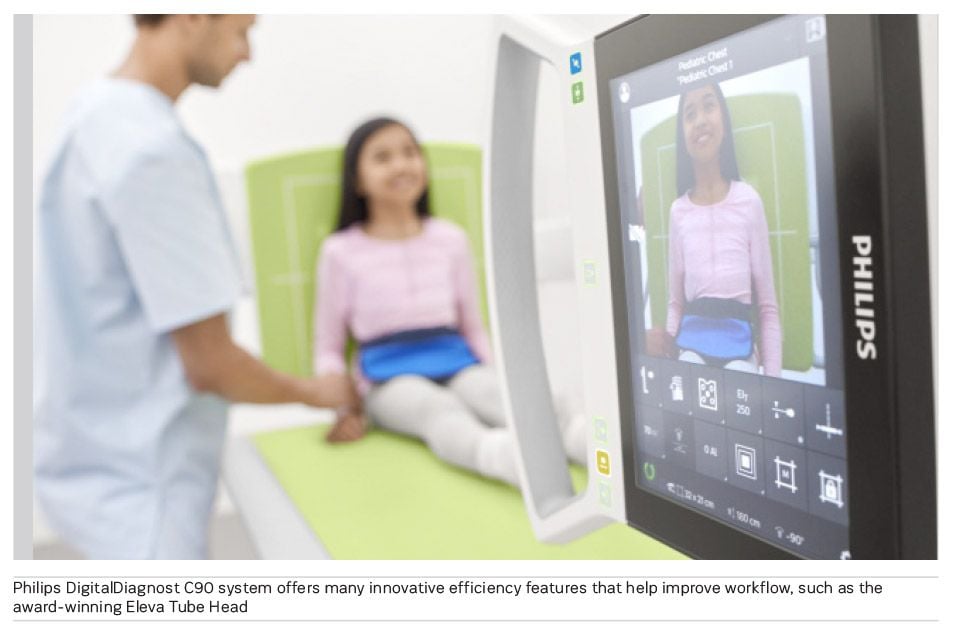Driving Toward the Goals of the Quadruple Aim
Innovation comes in many forms and for many reasons. It can spur positive change or can extend beyond “change” to “disruption” of an industry. It can be a metamorphosis, or simply an alteration to an existing process. It can be designed to make jobs easier, achieve better results, or increase connectivity. Whatever the reason, innovation yields positive change and forward progress. In healthcare, innovation is focused on saving lives and keeping people healthy, making meaningful innovation paramount.
Healthcare innovation isn’t accidental. A lot of people have to do a lot of work to turn moments of brilliance into something meaningful for customers. Innovation in imaging must be fundamentally and firmly grounded in solving real-world challenges routinely experienced by customers and stakeholders. In order to make innovation meaningful, it must “mean” something to someone; it must make a difference for patients and their families, for the staff that deliver the care, and for the hospital’s overall efficiency, business objectives and economic constraints.
To make healthcare innovation impactful, it should focus on the main points throughout the entire imaging ecosystem. The day-to-day clinical and operational insight of healthcare stakeholders is essential to ensure imaging innovation maps back to what they need to do their jobs better, while also doing so safely, cost-effectively, with less stress and in a more patient-centric way. This could mean reducing inefficiencies, bottlenecks or "wasted time" to streamline radiology workflow at every aspect of the imaging process – from patient referral, registration and image acquisition, through image coupling with other patient data, to a signed report, physician notification and follow-up of incidental findings. Or, it can be focused on speeding up turnaround time by ensuring that every image provides the data necessary for a more definitive diagnosis the first time. In this way, there is no difference between “imaging innovation” and “meaningful innovation.” They are the same thing.
Innovation Aligned With Value-Based Care and the Quadruple Aim
As value-based care initiatives are making healthcare providers view everything they do from the eyes of the patient to deliver the most efficient and effective care, innovation in tandem, is often focused on the patient experience. Since diagnosis is often the first outcome in care delivery, it is an area where imaging can make a key contribution toward precision diagnosis for patients and have a high impact in value-based care globally.1 But, it isn’t the only area where innovation makes a difference. Philips takes an integrated, systems-view approach with imaging innovation that strives toward the four goals of the Quadruple Aim: improving the patient experience, achieving better health outcomes, improving the staff experience, and lowering the cost of care.
Philips’ advanced imaging modalities in CT, molecular imaging, MR and X-ray are focused on seamlessly connecting data, technology and people. We use
adaptive intelligence to boost diagnostic confidence, analytics and operational improvement, and enterprise partnership models to address the challenges of value-based care and the promise of precision diagnosis. As radiology departments increasingly rely on their imaging solutions to meet mounting demands, integrated technology solutions are critical in these areas to use innovation as a way to move care upstream, keeping communities healthier, and detecting and treating diseases more effectively.
Innovations in MRI Focus on Speed, Comfort and Confidence
For example, Philips provides high-quality MRI imaging up to 50% faster
2 with Compressed SENSE, a powerful acceleration technique that can be used for the majority of MRI sequences across all anatomies.
Compressed SENSE is compatible with multiple generations of Philips MRI systems including our
Ingenia MRI portfolio to deliver speed, comfort and confidence, designed to meet today's healthcare provider’s needs. To improve the patient experience further, our MRI solutions can be combined with the Philips
Ambient Experience In-bore Connect which offers a soothing, immersive and personalized experience for patients. By focusing more on the patient during exams, hospitals can boost the efficiency of MRI procedures.
3
Many hospitals, such as Hennepin Healthcare in the USA, have seen first-hand the benefits of Compressed SENSE. Neuroradiologist Dr. Mark Oswood, MD, PhD, commented, “We immediately incorporated Compressed SENSE into our protocols, and we are seeing overall 20-40% reductions in total scan time for different protocols. So it is being validated in the real world in our experience. And the image quality has been excellent.”4
It was the drive toward meaningful innovation that inspired the Philips Ingenia Ambition MRI scanner with its new BlueSeal magnet, a technology which is designed to reduce lengthy and costly disruptions in a MRI practice, and help healthcare facilities transition to more productive5 and helium-free operations. With BlueSeal, hospitals can reduce their dependency on helium, an integral part of managing a healthcare organization’s productivity and total cost of ownership. In addition, with the innovative BlueSeal technology, the magnet is around 900 kg lighter5 than its predecessor and does not need a vent pipe, potentially resulting in easier siting and lower construction costs.
To improve the staff experience, the
Ingenia Ambition includes a range of features that combine guided patient setup and Adaptive-Intelligence-driven SmartExam analytics for automated planning, scanning and processing. This frees up time and allows a single operator to manage the scan with just a single touch of a button.
These types of MRI productivity enhancements from Ingenia Ambition can help make single operator workflow more efficient, which is key to improving the staff experience and lowering the cost of care in line with the goals of the Quadruple Aim.
Innovations in AMI and CT Provide Clinical, Operational and Business Benefits
Our CT portfolio of solutions helps hospitals unlock insights with certainty, simplicity and reliability. In particular, our IQon Elite Spectral CT technology is redefining the standard of care for patients. As the only detector-based spectral solution, one of the unique key benefits of
Philips IQon Elite Spectral CT is that it applies spectral technology 100% of the time, which gives radiologists the ability to see things that aren’t visible with conventional scans that may be significant in determining a patient’s diagnosis. By eliminating the guess-work in image reading with IQon Elite Spectral CT, hospitals can more readily meet one of the key goals of the Quadruple Aim of improving health outcomes for patients.

The always-on design, without increased radiation dose, is an important innovative distinction of IQon Spectral CT over other spectral scanners. At the same time, IQon Spectral CT significantly advances workflows, leading to fast procedures, an enhanced patient experience, and potential cost savings.
In the advanced molecular imaging (AMI) industry, our innovation pioneered the switch to digital with
Philips Vereos Digital PET/CT, the first fully digital PET/CT for improved images. Unlike analog PET/CT scanners that use photomultipliers, or analog SiPMs to detect light, the Vereos Digital PET/CT scanner uses proprietary Digital Photon Counting (DPC) technology which converts light directly to a digital signal with zero analog noise. With Vereos, healthcare providers are able to make a more confident diagnosis and move toward personalized treatment, which molecular imaging is already helping to inform. These key innovations in AMI are helping provide clinicians with the right level of individualized insight to enable them to understand which patients are responding to treatment, and which aren’t – supporting improved health outcomes.
Innovations in X-ray Offer Intuitive Workflow, Diagnostic Confidence and Economic Value
More than an X-ray machine, the
Philips DigitalDiagnost C90 is designed to keep the technologist focused on the patient to improve the patient’s overall experience. It offers many innovative efficiency features that help speed up technologist workflow, such as the award-winning Eleva Tube Head and industry’s first monitor with live camera collimation, SkyFlow Plus gridless imaging and automated system movements. The live camera also helps reduce time needed to train new technologists.
The Reiner de Graaf hospital in Delft in the Netherlands has seen first-hand the benefits of some of the innovative features of the DigitalDiagnost C90 system. In using the new Eleva Tube Head for example, one radiographer commented, “Since I have a very short time per patient, speed of the system and comfort for the patients are vital to me. We will be able to give an even more personal treatment to our patients since we have all the relevant information available on the tube head.”
To improve health outcomes, the DigitalDiagnost C90’s advanced technologies such as UNIQUE 2, Integrated Bone Suppression, and Live Camera collimation improve time-to-diagnosis and department outcomes. Philips UNIQUE 2 delivers the next generation of image processing that detects the appropriate region of interest, automates the contrast, and reduces noise and artifacts to improve visibility of details while the overall impression remains natural. To lower costs, DigitalDiagnost C90 offers the ability to scale equipment to meet individual department, location and financial needs.
Innovation’s End Game
At Philips, we see innovation as a means to an end – improving people’s lives. In imaging, our innovation focuses not only on patient care but also on enabling all the healthcare stakeholders including technologists, radiologists, department administrators and C-suite executives, to provide more efficient care.
For patients, it means making it easier to endure an exam by making exam length shorter, the gantry bed more comfortable, the room more inviting and customized, or creating technology solutions that
reduce fear and anxiety in imaging, helping the patient feel calmer, informed and more in control. For staff, it means technology that helps them operate imaging equipment faster and easier, with automated guidance of steps, so that they can focus more time on the patient to deliver patient-centered imaging. For administrators, it means empowering them with the real-time data-driven insights they need to continuously improve operations,
patient scheduling and no-shows, and system utilization efficiency. This allows better utilization of healthcare resources and accommodation of patients to receive faster and timelier care. For C-suite leaders, it means tying imaging innovation into their broader business goals, enterprise–level systems and reimbursement metrics or financial and economic realities, to deliver more efficient care at a lower cost and facilitate better access to care to a broader patient population.
It means our innovation efforts tightly align with our customers’ objectives and deliver tangible value. That is when innovation means the most.






